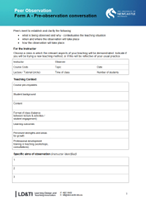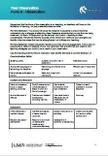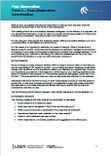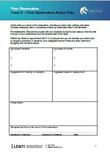What is it?
Peer observation is a form of peer review in which one instructor (the observer) observes a peer (the instructor) in their teaching and provides them with feedback on their areas of strengths and areas in which there is room for growth. This process carries with it several benefits.
Benefits for the Instructor
- Identifies areas of strength in your teaching to improve your confidence and reinforce your skills.
- Provides areas to focus on to make your teaching even more successful, thereby improving your relationship with students and contributing to their success.
- Provides you with specific and unique peer feedback that can be used in a teaching portfolio.
- Increases awareness of teaching & learning.
- Increases a sense of connection and opportunity to dialogue with colleagues.
Benefits for the Observer
- Reinforces your experiences and knowledge as an instructor.
- Increases your teaching repertoire and exposes you to new teaching methods.
- Illuminates issues students may be having in the course/program that you may not otherwise be aware of.
- Increases awareness of teaching & learning.
- Increases sense of connection and opportunity to dialogue with colleagues.
There are four steps in this process:
- Pre-observation conversation (Form A)
- Observation (Form B)
- Post-observation conversation (Form C)
- Post-observation action plan (Form D)





